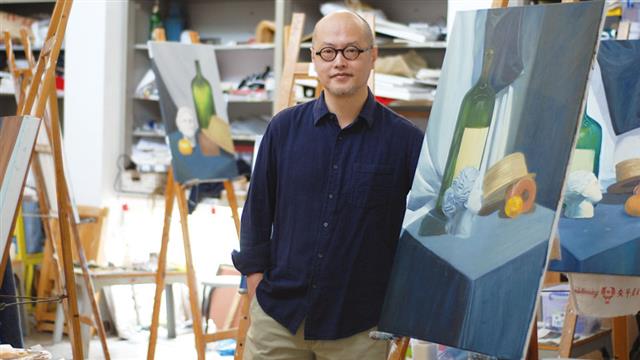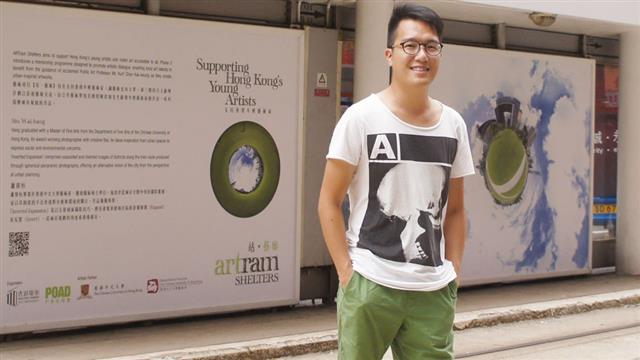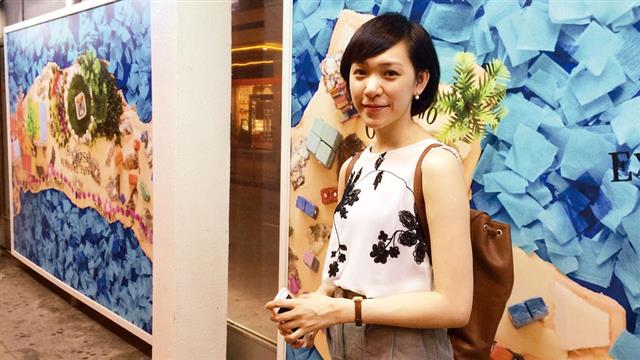In front of Siu Wai-hang's photo series 'Inverted Expansion', a viewer watches a spherical streetscape in a photo. As he struggles to identify the place, he hears a 'ding-ding' sound behind him. He turns around and boards a tram. The place is neither a museum nor a gallery. It is the tram stop in O'Brien Road, Wanchai.
This is the Phase 3 of ARTram Shelters, a collaboration between the CUHK Department of Fine Arts, Hong Kong Tramways, and POAD, an advertising company. The event features the works of two graduates of the CUHK Master of Fine Arts Programme. One is Siu Wai-hang and the other is Chan Hin-sin Cindy, whose work 'The Fragmented Journey' is on display at the tram stop in Pennington Street, Causeway Bay. Prof. Chan Yuk-keung Kurt of the department serves as their mentor in the event. He says, 'As venues for public art, tram shelters have their advantages. There are a lot of people passing by and staying there. This makes the art accessible to a large number of viewers.'
According to Professor Chan, public art can be produced by means of two models: 'top-down' and 'bottom-up'. The former are government- or developer-initiated public art projects in public spaces or shopping malls for art education or purely decorative purposes. Businesses can also improve their corporate images by promoting public art. The 'bottom-up' model refers to art activities organized by grass-roots groups. This model contains more elements of community art and is aimed at improving community cohesion, strengthening interpersonal relationships, enabling members to know more about the characteristics of their communities, and thus achieving the effect of empowerment.
Recent years have seen a convergence of these two models. Using Phase 3 of ARTram Shelters as an example, Professor Chan says: 'It began as a “top-down” project, but the artists have devoted their attention to local communities. Their goal is not merely to produce aesthetically pleasing visuals. So, in terms of the content, this event does have a “bottom-up” spirit.'
The two CUHK artists are distinctive in their techniques. Siu Wai-hang took photos of streetscapes along the tram line and used a computer program to turn them into spherical images, offering mind-bending pictures of the street scenes with which people in the neighbourhood and tram riders are familiar. He says, 'By expanding and inverting images of our cityscape through spherical panoramic photography, “Inverted Expansion” turns the 3D cityscapes into 2D images, offering viewers a unique visual experience.'
Cindy's claymation-esque representations of shops and landmarks with social and cultural significance along the coastal tram route encourage viewers to revisit those locations with child-like enthusiasm. She says, 'My work serves as an imaginative journey to the swathe of reclaimed land along the tram route, inviting viewers to reflect on the transformation of Hong Kong's coastline.'
The works of both artists, on display until January 2015, are community-oriented. Professor Chan explains, artists working in the public art field have to be humble. They have to visit a community as students, looking for local features and highlighting them with their artistic ingenuity. In a way, artists creating public art can be described as servants, as opposed to god-like creators who create masterpieces meant to awe.




